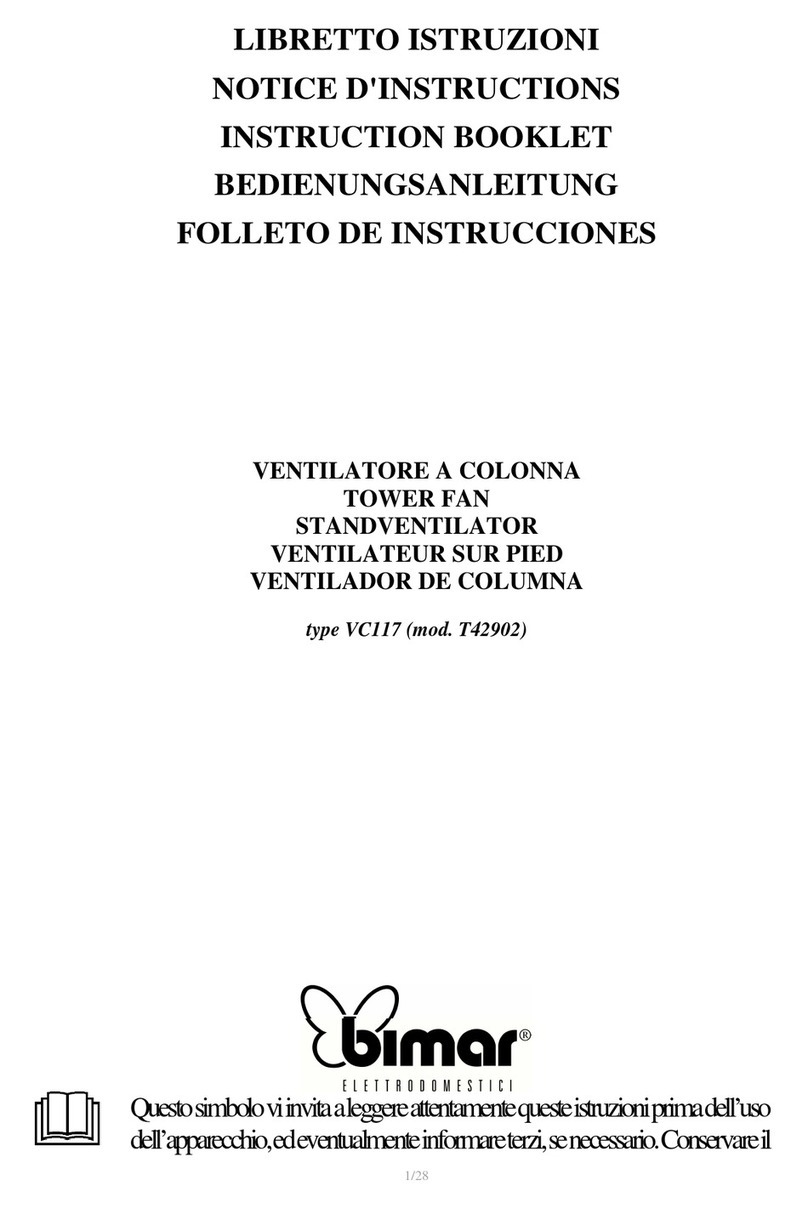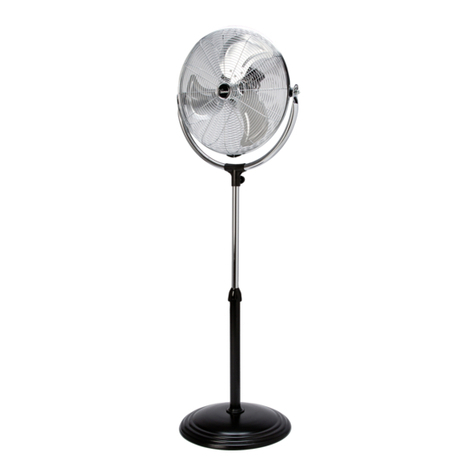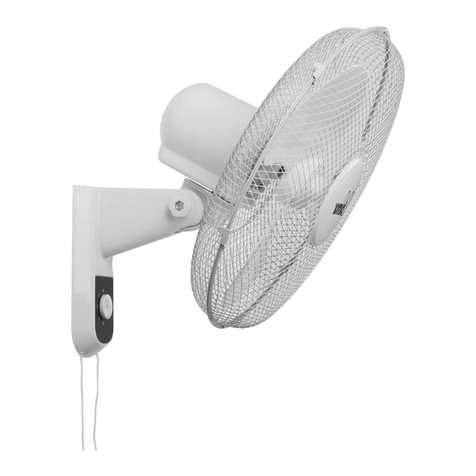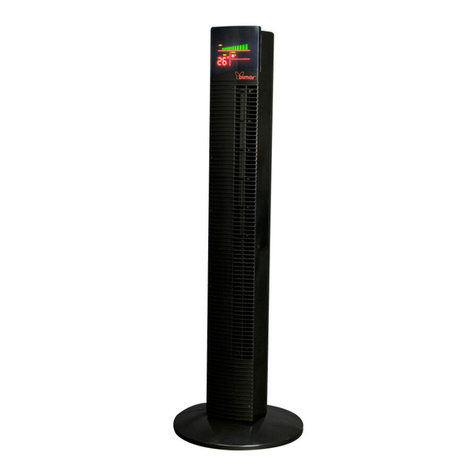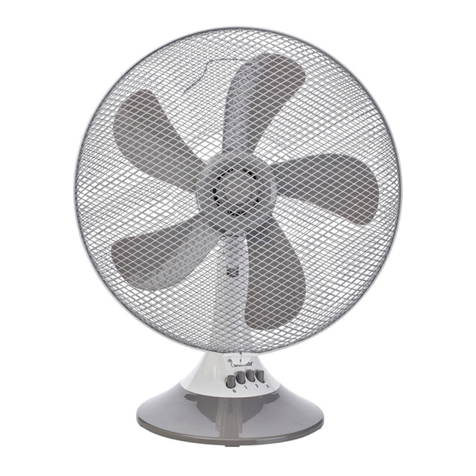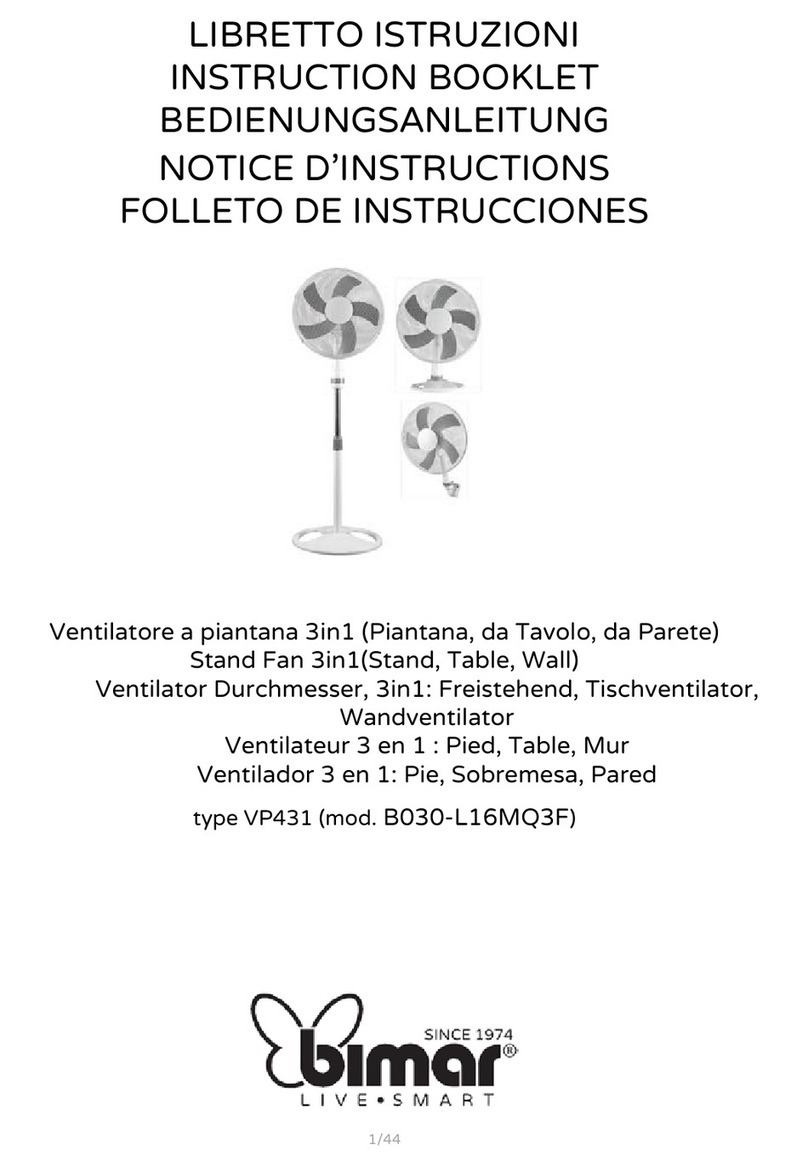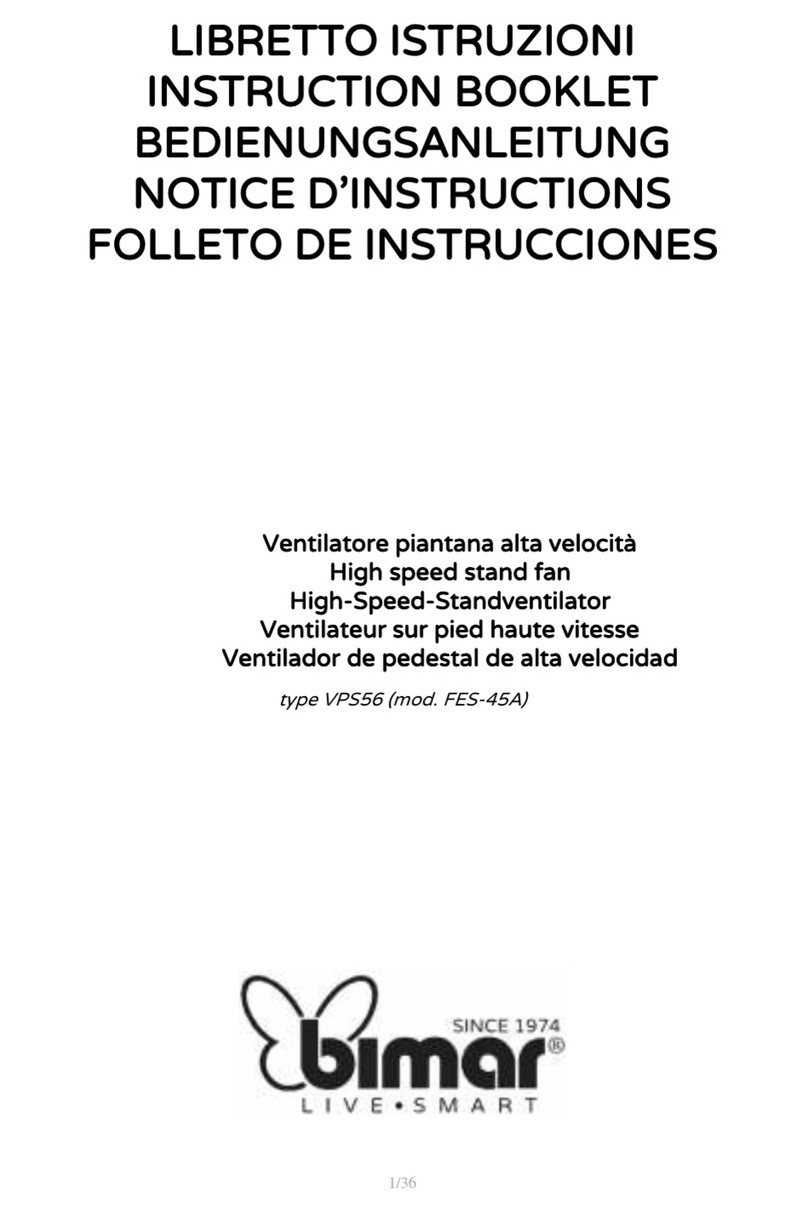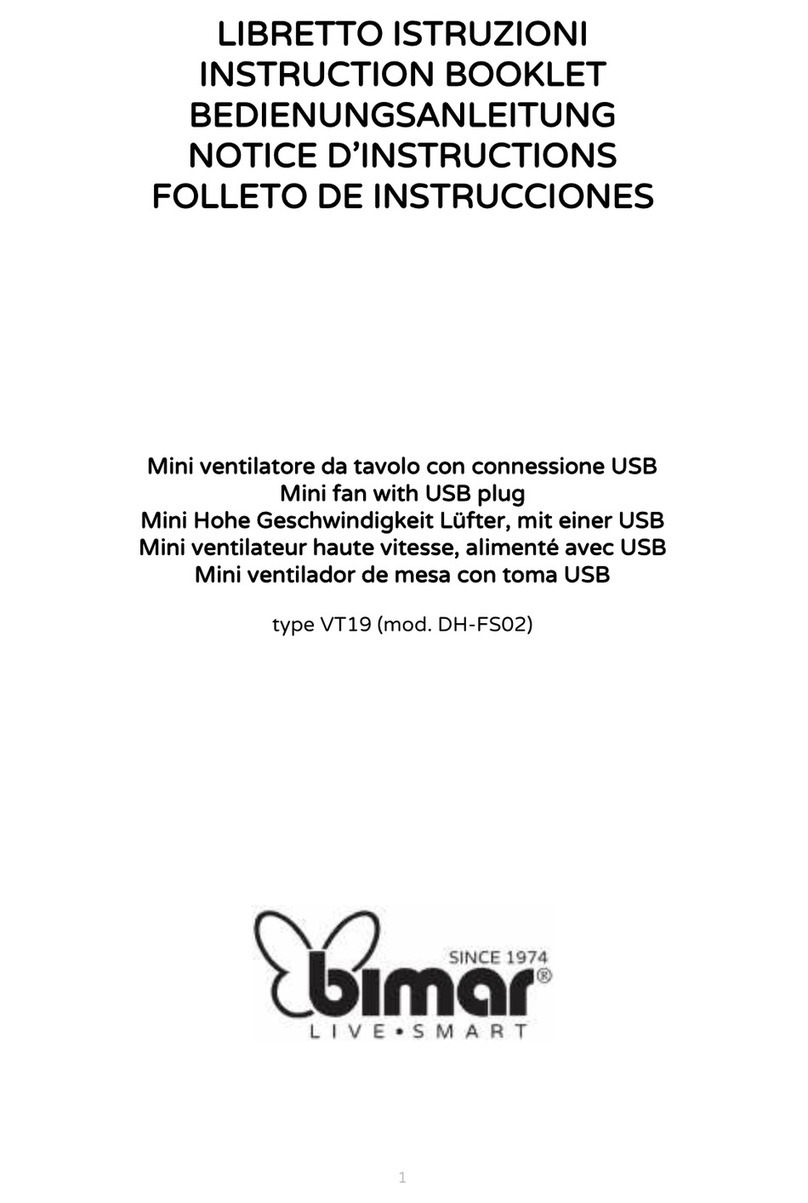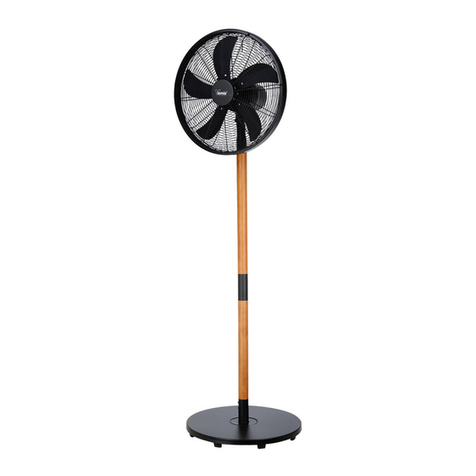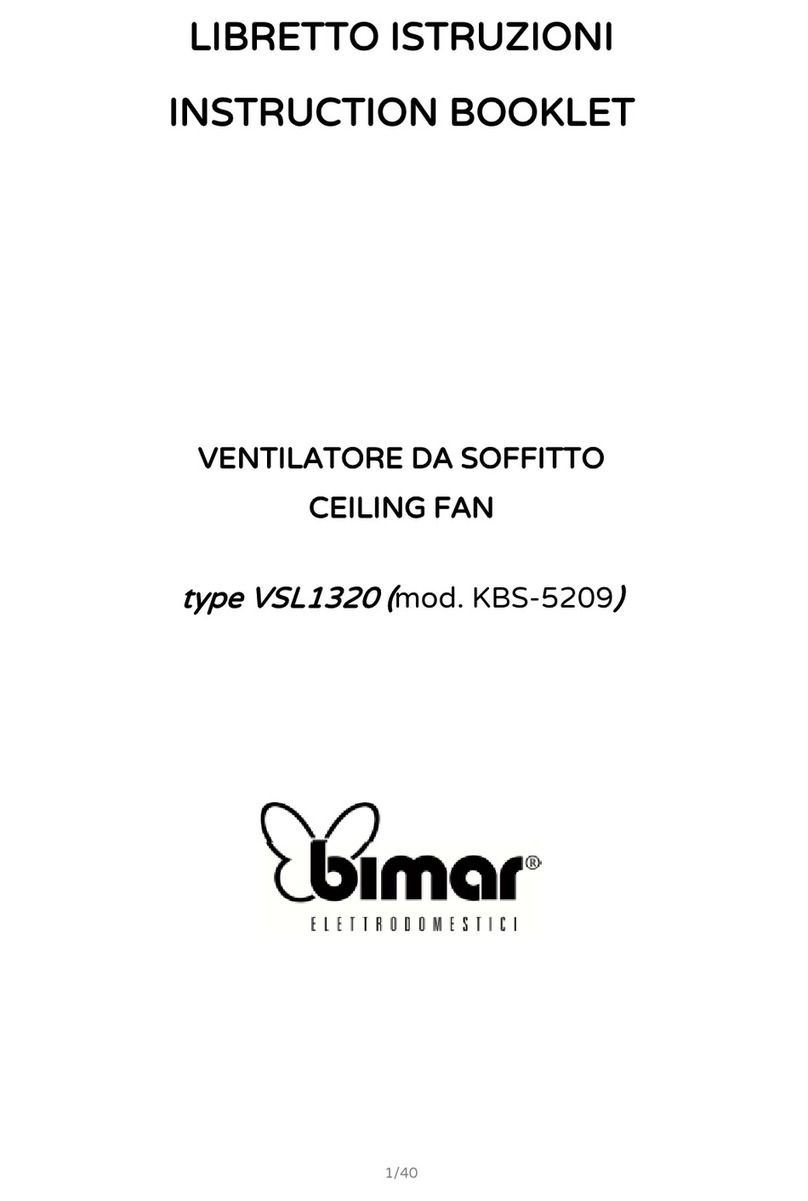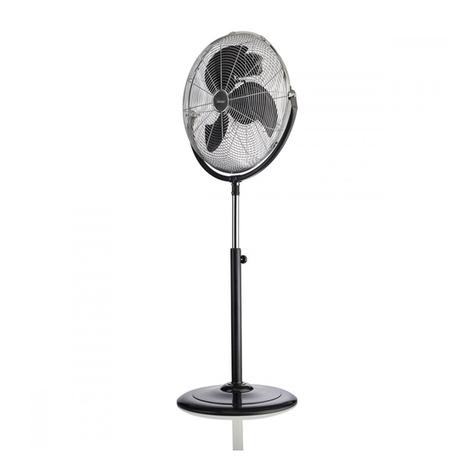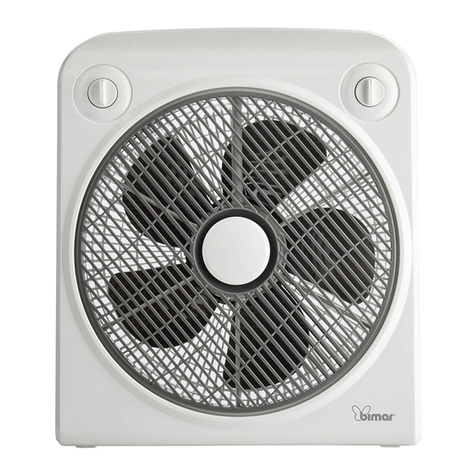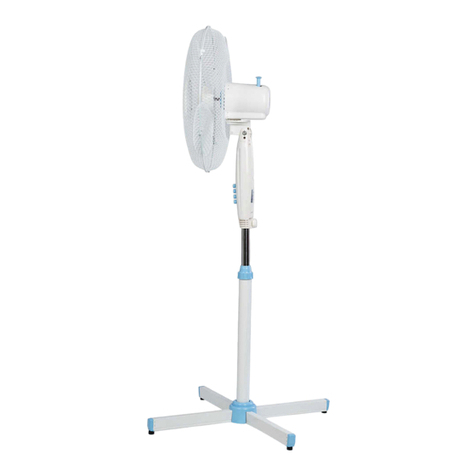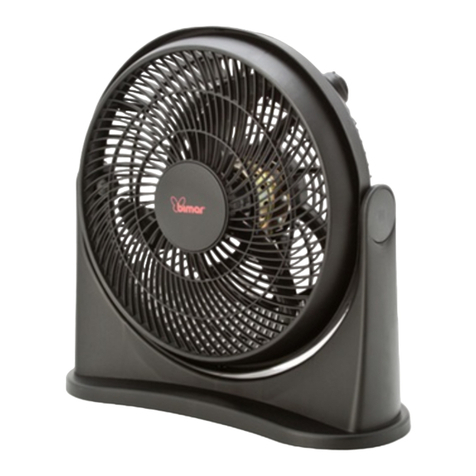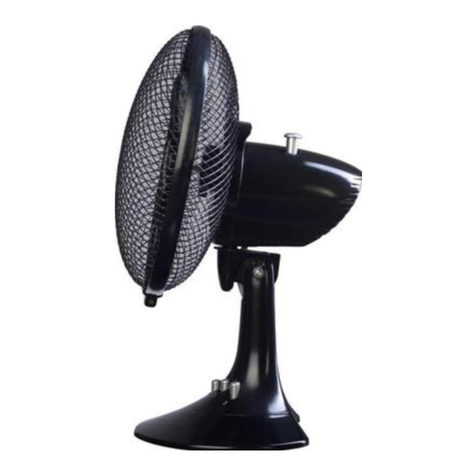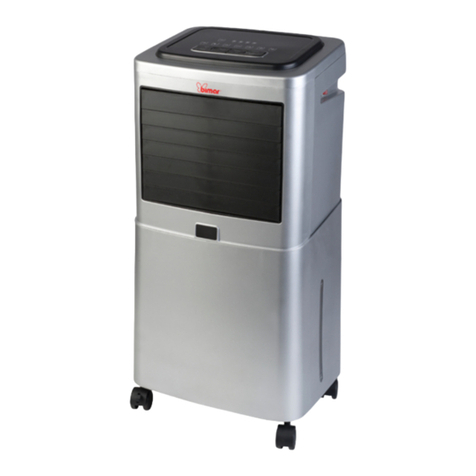6/16
Please read these instructions carefully before using the appliance, and instruct other persons using it, too,
when necessary. Keep booklet handy for further use.
GENERAL NOTICES
This device is intended for home use only, to ventilate rooms, and in the manner described in this
manual: do not use it for any other purpose. Any other use is to be considered inappropriate and
therefore dangerous. The manufacturer cannot be held responsible for eventual damage caused by
inappropriate, improper or irresponsible use and/or for repairs made to the product by unauthorised
personnel.
Do not touch the appliance with wet hands or feet.
Do not insert any tool, or your fingers, into the grille protecting the blades.
This appliance is not intended for use by persons (including children) with reduced physical, sensory or
mental capabilities, or lack of experience and knowledge, unless they have been given supervision or
instruction concerning use of the appliance by a person responsible for their safety. Children should be
supervised to ensure that they do not play with the appliance.
The appliance must be kept out of children’s reach.
Attention: when using electric appliances, the basic safety precautions must always be observed to
avoid risks of fire, electric shocks and physical injury.
Do not use the appliance if it is not operating correctly or seems damaged; if in doubt, contact
professionally qualified personnel.
Make sure that the appliance is working correctly: if not, turn the heater off and have it checked
by professionally qualified personnel.
Do not move the appliance when it is operating.
Unplug the appliance when not in use.
Do not use the device at room temperatures above 40 °C.
Do not leave the device exposed to the weather (sun, rain, etc.).
Do not pull on the cord to disconnect the plug from the socket.
If the electric cord is damaged, it has to be replaced by the supplier or an authorized service center
or a professionally qualified, to avoid any risks.
INSTALLATION
After removing the packing materials, check the integrity of the appliance; if you are unsure, do
not use it and ask for qualified professional help. The packing materials (plastic bags, polystyrene
foam, nails, etc.) must be kept out the reach of children because they are potential sources of
danger.
Before connecting the appliance, check that the voltage values shown on the data plate correspond
to those of the electricity supply network. In the event of incompatibility between the electric
outlet and the plug of the heater, have the outlet replaced with another more suitable type by
professionally qualified personnel, who will make sure that the section of the wires of the outlet is
appropriate for the absorbed power of the heater. In general, the use of adapters or extension
cords is not recommended; if their use is indispensable, they must conform to existing safety
standards and their current capacity (amperes) must not be less that the maximum of the
appliance.
To not place the appliance near sinks or other container of liquids (minimum distance of 2 meters)
to avoid the risk of it falling in.
Do not place the appliance near an open flame, cooking or other heating appliance.
Keep the fan far away from fabrics (curtains, etc.) or unstable materials that could obstruct the air
intake grille; make sure that the front is free of unstable materials (dust, etc.).
Make sure that the electric cord is not touching rough, hot or moving surfaces and not twisted or
wrapped around the appliance.
Stand the appliance on a horizontal, flat surface or table; do not stand on a inclined plane (the
appliance could upset).






